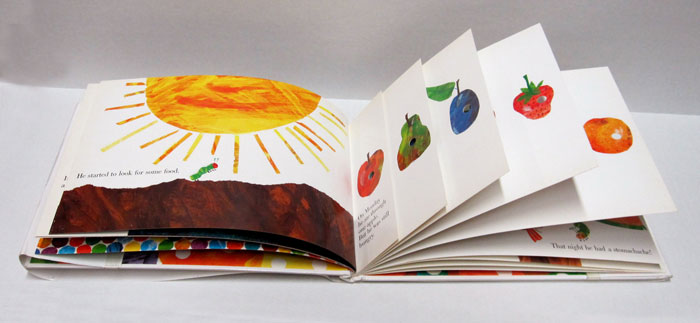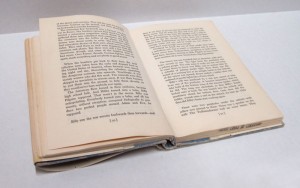1969: The Very Hungry Caterpillar & Slaughterhouse-Five
The Very Hungry Caterpillar
Author/Editor: Eric Carle
A children’s picture book designed, illustrated and written by Eric Carle which is now considered a classic for children of all ages! Cited by the New York Times as one of the best picture books of 1969, this book has gone on to sell over 30 million copies worldwide. Carle’s web site provides a plethora of information about him as well as lots of creative inspiration. In his own words, he reflects upon his writing! Carle says:
“With many of my books I attempt to bridge the gap between the home and school. To me home represents, or should represent; warmth, security, toys, holding hands, being held. School is a strange and new place for a child. Will it be a happy place? There are new people, a teacher, classmates—will they be friendly?
I believe the passage from home to school is the second biggest trauma of childhood; the first is, of course, being born. Indeed, in both cases we leave a place of warmth and protection for one that is unknown. The unknown often brings fear with it. In my books I try to counteract this fear, to replace it with a positive message. I believe that children are naturally creative and eager to learn. I want to show them that learning is really both fascinating and fun.”
The book is so popular there is even a salad named in its honor!
Very Hungry Caterpillar Fruit Salad
1 Apple
2 Pears
3 Plums
4 Strawberries
5 Oranges
Bunch of Mint Leaves
Peel, pare, seed, hull and section each fruit. Cut into bite-sized pieces. Then put them all together in a big bowl and chill. Garnish each serving with a sprig of mint. Serve to a small group of friends, after reading a good book. You’ll enjoy every bit of it. ( retrieved from the Eric Carle web site: http://www.eric-carle.com/home.html)
–http://www.eric-carle.com/home.html
Slaughterhouse-Five
Author/Editor: Kurt Vonnegut
Slaughterhouse 5, or The Children’s Crusade was one of the first books to take a fantastical, anti-realist approach to World War Two. Vonnegut’s novel refrained from showing WWII as the Good War, and from showing it as an uncomplicated loss of innocence. Instead, he fragmented the story and added fantastical elements that destabilized what had come to be a well-known realist narrative.
Published in 1969, too, when the ethos of ‘trust no one over 30’ was strong and the Vietnam War was raging, the book took a childlike protagonist and put him in strange and hellish situations.
It was also in a way a documentary—recounting the firebombing of Dresden, which had been little known in the United States and which still generates controversy over whether it was a justified military target or an immoral act. As Billy Pilgrim said: “I just want you to know: I was there.”
Vonnegut himself recalled writing the book and experiencing the bombing like this:
“The Dresden atrocity, tremendously expensive and meticulously planned, was so meaningless, finally, that only one person on the entire planet got any benefit from it. I am that person. I wrote this book, which earned a lot of money for me and made my reputation, such as it is. One way or another, I got two or three dollars for every person killed. Some business I’m in.”
-Kurt Vonnegut, Palm Sunday, Dial Press, 2011 page 275.






